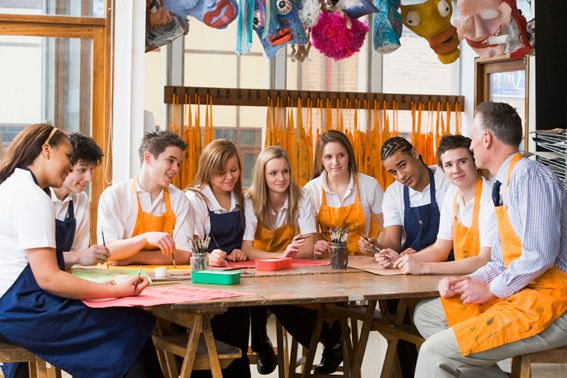The Benefits of Adding Art to Your Homeschool Curriculum
- Sharon

- May 21
- 3 min read
Incorporating art into your homeschool curriculum can enhance your child's educational experience significantly. While traditional subjects like math, science, and language arts are essential, integrating art fosters creativity, critical thinking, and emotional expression. Here’s a closer look at the benefits of adding art to your homeschool curriculum.
Why Include Art in Your Homeschool Curriculum?
Art education is often overlooked in traditional school settings, but it has profound benefits for children's intellectual and emotional development. Research shows that art encourages kids to think outside the box while improving their academic performance in other subjects. Studies indicate that schools with strong arts programs often have higher test scores across the board.
Additionally, art can make learning more enjoyable. It provides a break from traditional learning methods, allowing children to express themselves in unique ways. By pursuing interests in drawing, painting, or even digital art, students are likely to be more engaged and motivated to learn.

Skills Developed Through Art
Art education supports the development of several critical skills that are applicable beyond the classroom. Here are some key skills that your kids can develop through art:
Creativity: Art encourages imaginative thinking. Students learn to create, enabling them to come up with unique solutions to problems.
Critical Thinking: Art involves decision-making, such as selecting colors, materials, and techniques. This cultivates a child's ability to analyze and evaluate their choices.
Communication: Whether through painting, drawing, or sculpture, art helps individuals express their thoughts and feelings. This non-verbal communication can enhance your child's ability to articulate ideas in other subjects.
Fine Motor Skills: Activities like drawing or sculpting help develop fine motor skills, which are essential for writing and other academic tasks.
Cultural Awareness: Art exposes kids to different cultures and historical contexts. This broadened perspective fosters empathy and awareness of the world around them.
Integrating skills like these into your homeschool curriculum can prepare your children for future academic and social success.

Building Self-Confidence and Emotional Expression
Adding art to your homeschool curriculum can also have a positive impact on your child's emotional well-being. Here’s how:
Self-Confidence: Creating art helps students develop a sense of accomplishment. When they complete a project, it builds pride and self-esteem.
Emotional Outlet: Art allows children to express their feelings in a safe and constructive way. Whether they are happy, sad, or angry, they can channel those emotions through their artwork.
Encouraging emotional expression is crucial in developing resilient individuals. Providing the tools for your children to explore their feelings positively can foster a well-rounded mindset.

Practical Tips for Incorporating Art into Your Homeschool Curriculum
Incorporating art doesn't have to be a daunting task. Here are some practical tips to seamlessly integrate art into your curriculum:
Set Up a Dedicated Space: Create an inviting art corner or room. Make sure it is stocked with a variety of materials.
Integrate Art with Other Subjects: For example, when studying history, you could explore the art movements of that time. When learning about nature, encourage your child to create botanical illustrations.
Join Online Classes: There are many platforms that offer art instruction. Consider enrolling your child in an art class that suits their interests. Look for programs that cater to homeschool families, such as homeschool art classes.
Encourage Free Expression: Allow children the freedom to create whatever they want. This can reignite their passion for art and foster creativity.
Attend Art Shows or Exhibitions: Take field trips to local galleries or museums. Experiencing art firsthand can inspire children and expose them to diverse art styles.
By using these strategies, you can easily incorporate art into your homeschool curriculum and enrich your child's educational experience.
Conclusion: A Holistic Approach to Learning Through Art
Incorporating art into your homeschool curriculum is not just an add-on; it is a vital element of a comprehensive educational experience. Through art, children learn valuable skills, cultivate emotional intelligence, and excel academically. The benefits extend far beyond the canvas, enhancing their overall development and preparing them for a bright future.
Engaging in arts and crafts allows for creativity to flourish in a way that traditional subjects may not encourage. Embrace the beauty of art in your learning journey and watch as your children thrive.













Comments